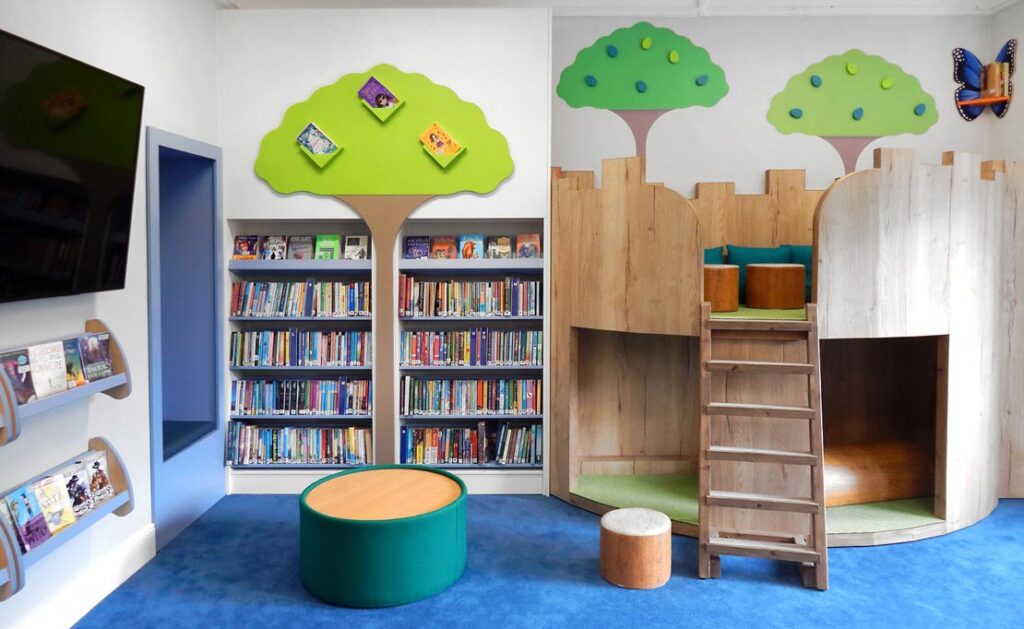As an elementary school librarian for over a decade, I’ve seen firsthand how the physical space of a library can significantly impact a child’s reading experience. The right decor not only attracts young readers but also inspires a love for books and learning. In this comprehensive guide, we’ll explore exciting ideas for elementary library decor, focusing on creating a vibrant, engaging, and functional space.
Why Library Decor Matters
Decor plays a crucial role in creating an inviting atmosphere that encourages children to explore and enjoy reading. Here are a few reasons why library decor is vital:
- Encourages Reading: A visually appealing and interactive environment stimulates curiosity and a love for books.
- Supports Learning: Thoughtfully designed spaces can support various learning styles and promote literacy.
- Community Engagement: A welcoming library can serve as a community hub, fostering connections among students, teachers, and families.
Key Elements of Effective Elementary Library Decor
1. Color Scheme
Colors can change the mood of a space and influence children’s behavior. Bright, cheerful colors can stimulate creativity and engagement, while soft colors can create a calm and focused environment.
2. Furniture Selection
Choosing the right furniture is essential. Comfortable seating areas, adjustable tables for various activities, and display units that are child-friendly are crucial to fostering an inviting space.
Types of Furniture to Consider
| Type | Description | Pros | Cons |
|---|---|---|---|
| Bean Bags | Soft, movable seating | Comfortable, fun | Can be difficult to clean |
| Low Tables | Perfect for younger kids | Encourages group work | Limited use for older kids |
| Sturdy Bookshelves | Durable storage for books | Long-lasting, functional | Heavy to move |
3. Wall Decor
Walls can be transformed into creative storytelling canvases. Consider adding:
- Murals: Collaborate with local artists or students to create murals that depict story scenes or inspirational quotes.
- Bulletin Boards: Use bulletin boards to showcase students’ work, upcoming events, or book recommendations.
- Interactive Displays: Create displays that invite interaction, such as a “guess the book” section where children can share their favorite titles anonymously.
4. Cozy Reading Nooks
Reading nooks are essential in an elementary library. They provide children with quiet spaces to dive into books. Consider using:
- Pillows and Rugs: Add softness and comfort to reading corners.
- Privacy Screens: Use screens to create a sense of personal space.
- Creative Lighting: Invite warmth with lamps or fairy lights.

Incorporating Technology in Library Decor
In today’s digital age, libraries must blend traditional reading materials with technology. Here’s how to integrate tech into your library decor:
1. Tech Stations
Set up areas where students can explore digital resources. Include tablets or computers along with educational software that enhances learning.
2. Interactive Learning Tools
Incorporate tools like smartboards or projectors for collaborative learning experiences. This can transform storytime into an interactive session.

DIY Decor Ideas for Your Elementary Library
Creating a unique library space doesn’t require a big budget. Here are some DIY ideas that can add charm and character:
1. Book-Themed Art
Encourage students to create art pieces inspired by their favorite books. Display these pieces on a designated wall to showcase their creativity.
2. Upcycled Furniture
Give new life to old furniture by painting or reupholstering them with fun fabrics. This can be an engaging project for older students or parent volunteers.

3. Flexible Seating Options
Use cushions, yoga balls, and other unconventional seating arrangements to create a dynamic and flexible reading space.
Creating Thematic Areas
Thematic areas can enhance engagement and learning. Here are some themes to consider:
1. Nature Corner
Incorporate plants and natural elements to create a calming atmosphere. Use nature-themed books and decor to encourage exploration of the outdoors.

2. Science Lab
Incorporate science-related books and decor to spark curiosity about the world. This area could also include hands-on activities or experiments.
Maintaining Your Library Decor
1. Regular Updates
Keep the library fresh by changing displays and decor regularly. This encourages students to visit frequently to see what’s new!

2. Involve Students
Engage students in the decor process. Allow them to contribute ideas, designs, or volunteer to help keep the library neat and organized.
Pros and Cons of Different Decor Styles
Different decor styles can yield varied results. Below is a table comparing popular styles:

| Decor Style | Pros | Cons |
|---|---|---|
| Modern | Sleek, functional, easy to maintain | Can feel cold and uninviting |
| Whimsical | Inviting, fun, engages imagination | May distract from reading |
| Classic | Timeless, warm, promotes focus | May feel outdated if not refreshed |
Conclusion: Your Vision for the Perfect Library
Creating the perfect elementary library decor is a journey of creativity and passion. Your library should reflect the interests and needs of your students, providing them with an inviting space that nurtures their love for reading. Whether you opt for bold colors, interactive displays, or cozy reading nooks, remember that the goal is to create an environment where children thrive.
FAQs About Elementary Library Decor
What are some budget-friendly ways to decorate an elementary library?
DIY projects, upcycling furniture, and involving students in the decoration process are excellent budget-friendly options.
How often should I update the decor in my library?
Regular updates every semester or season can keep the space inviting and engaging for students.
What are some popular themes for elementary libraries?
Popular themes include nature, science, fantasy, and exploration, each designed to inspire curiosity and excitement.
How can I engage students in the library decor process?
Encourage students to share their ideas, create art for the library, or even help organize and decorate specific areas.
How important is the layout of the library?
The layout is crucial as it affects how students navigate the space, find books, and engage with different areas.